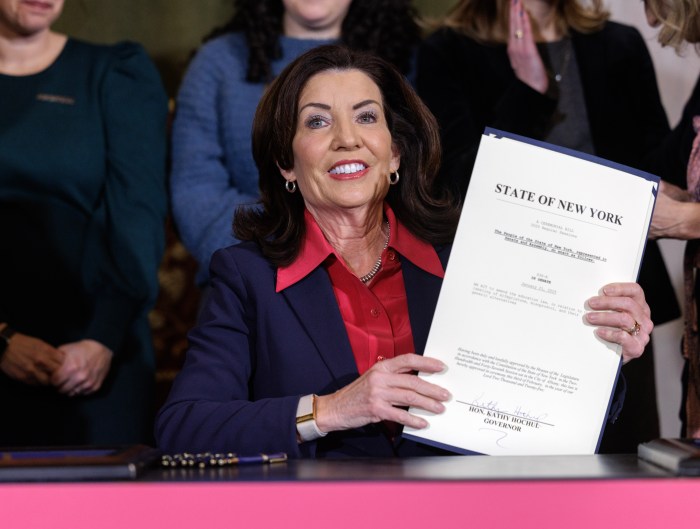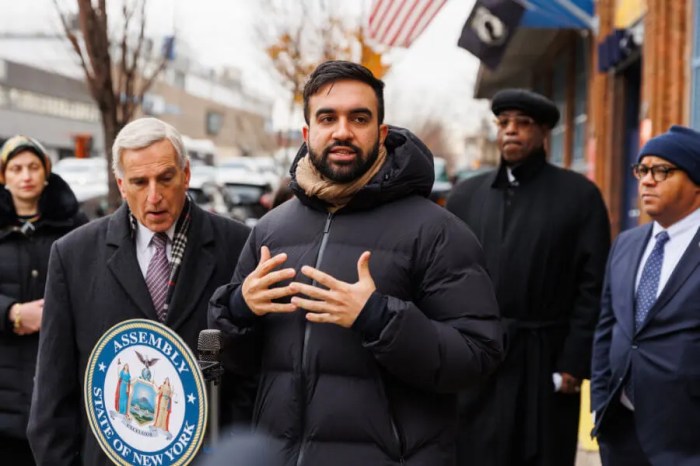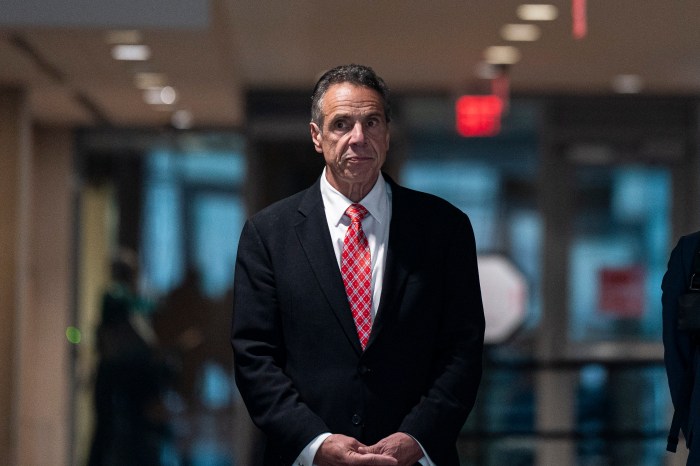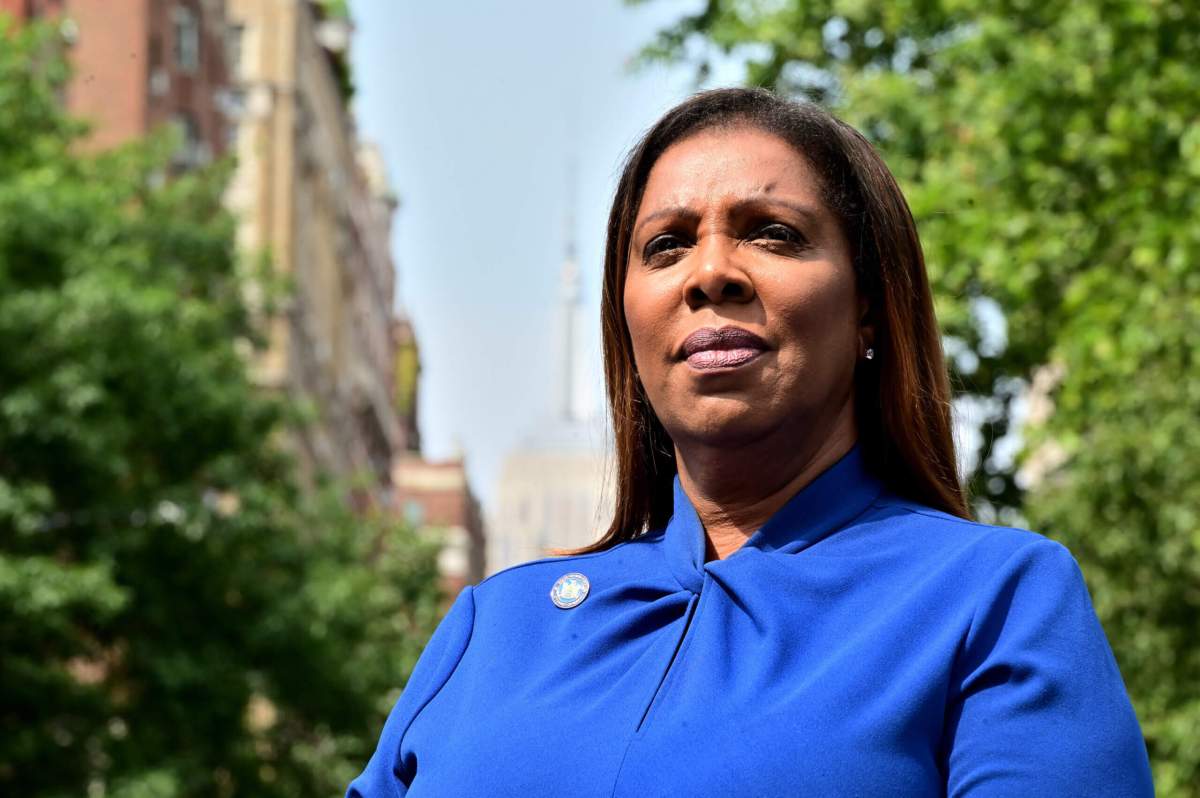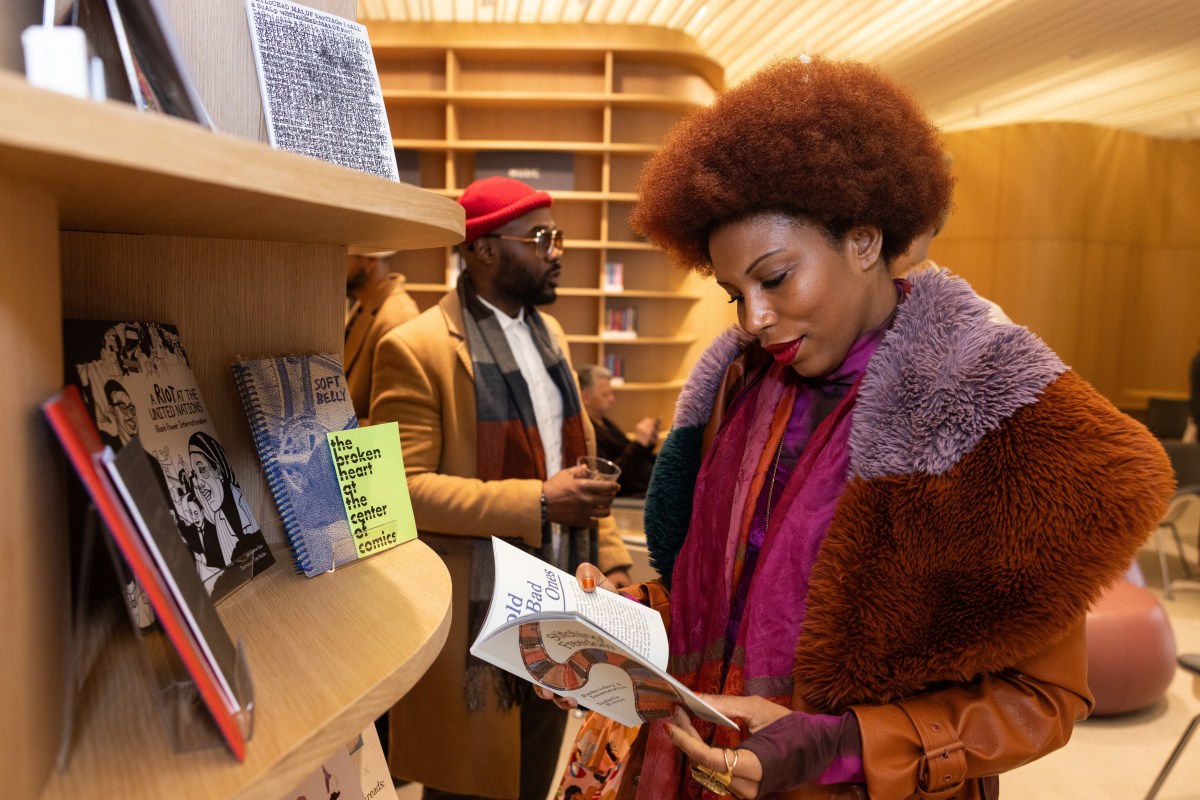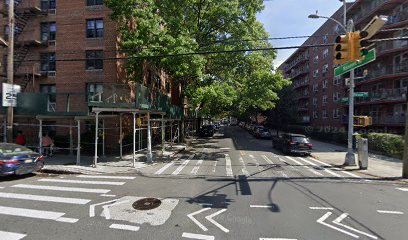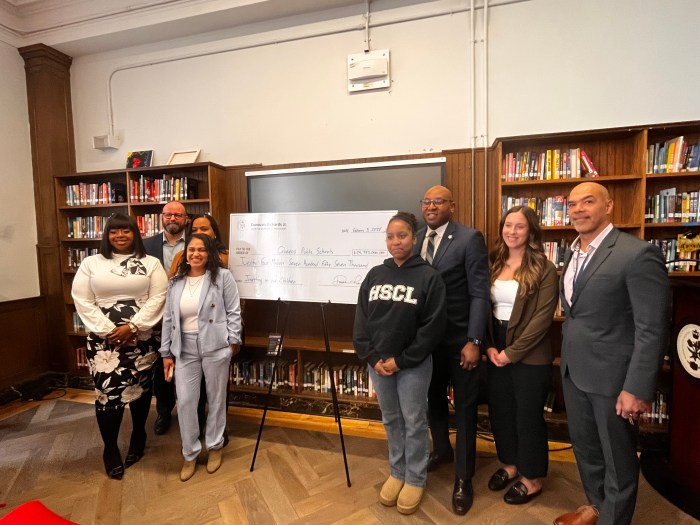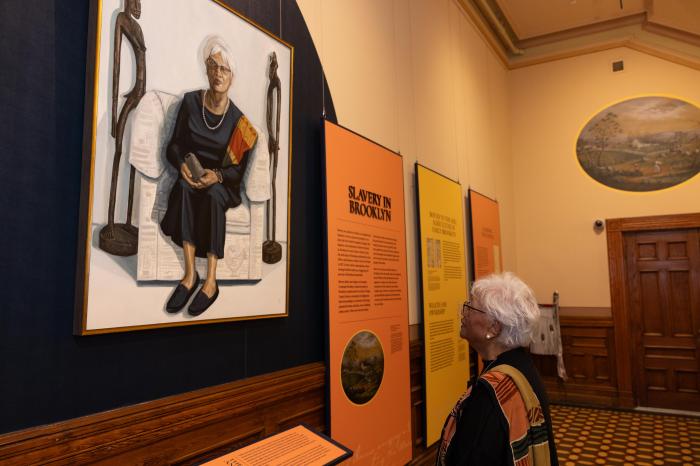
Transportation advocates are fuming over the “haphazard” placement of concrete barriers along the West Street bike path in the wake of the deadly terror attack along the greenway earlier this week.
Paul Steely White, executive director of Transportation Alternatives, said in a scathing statement on Friday that the installation of Jersey barriers and concrete blocks along the popular path was an “ill-advised and unacceptable solution” that reinforces the false notion that cyclists in the city should be scared.
“New Yorkers are particularly anxious about biking right now, and the city should be actively encouraging more people to ride, now more than ever,” White said. “Instead, by installing these brutal barriers, Gov. [Andrew] Cuomo is creating another safety hazard and actively discouraging bikers, walkers, and commuters from using one of the country’s vibrant public spaces.”
The Hudson River Greenway, which stretches up Manhattan’s West Side, is a state-owned public greenspace.
On Thursday, just two days after a terror suspect killed eight people by driving a truck down a large swath of the bike path in lower Manhattan, city and state Department of Transportation crews began installing concrete and Jersey barriers at 57 spots along the route between 59th Street and the World Trade Center, according to the mayor’s office.
The barriers are meant to protect pedestrians and cyclists on the greenway from vehicular traffic on the West Side Highway.
“Vehicles won’t be able to access places they aren’t supposed to,” said Ben Sarle, a spokesman for the mayor’s office. “They’re extremely heavy and effective.”
But at the corner of West 37th Street, crews set down a slab of concrete diagonally in the middle of the bike path.
“Stupidest idea I have ever seen. Thousands of bikers go here,” said Robert Sinclair, 44, of Clinton Hill. “People are going to seriously hit that.”
It was unclear if it would be moved in the future. A request for comment from the city DOT was not immediately returned.
The 20-foot-long Jersey barriers put in by the state are particularly dangerous, according to White, because they turn a two-way bike lane into one single lane, “effectively putting north and southbound cyclists on a collision course.”
“The Hudson River Greenway is the busiest pedestrian and bike path in North America — it is used and beloved by hundreds of thousands of New Yorkers every year, and the city and state’s current ‘solutions’ fail them in spectacular fashion,” White added. “We need to protect our public spaces without making them uninviting and difficult to use.”
Cathy Calhoun, chief of staff for the state DOT, said the barriers are only a short-term fix, put up to quickly to enhance the security around the bike path after Tuesday’s attack.
“…and DOT is moving forward expeditiously to develop a permanent solution that will enhance security while allowing emergency vehicles to do their jobs,” Calhoun said in an emailed statement.
White said although the city and state have promised the barriers are only temporary, cyclists deserve a hard timeline for their removal and called on the city to consider other solutions, like bollards.
“Until bollards can be installed, we insist that the state and the city refine the placement of their concrete blocks so that the integrity of the busiest bike path in the country can be maintained,” White added.
Bollards – short posts cemented into the ground that are often made of metal – would eliminate the risk of traffic violence and would be inexpensive to implement, according to White.
On Thursday, members of the City Council rallied on the steps of City Hall, calling on Mayor Bill de Blasio to support a council bill that would require the city to install metal bollards around schools, pedestrian plazas and at dangerous intersections where there are high levels of pedestrian deaths and serious injuries. As of Thursday afternoon, the legislation had support from a majority of council members.
“We have seen how vehicles have increasingly been used as weapons in other cities … and most recently right here, a few blocks away from where we are standing,” said Manhattan Councilman Ydanis Rodriguez, the bill’s sponsor and chair of the council’s Transportation Committee, who stressed gaining city support before bringing the bill to vote. “We should expand the use of bollards to include other high-pedestrian areas in the city — schools, parks and other cultural institutions.”
The legislation would require the city to install bollards on sidewalks “immediately adjacent” to at least 50 schools and along at least 20 dangerous intersections per year. It also would require bollards at every pedestrian plaza, but would give the DOT commissioner leeway to decline installation at plazas if they are not “consistent” with city guidelines or if they “endanger(s) the safety” of pedestrians.
Supporters pointed to other cities in Europe that have used bollards and expanded car-free zones as an example.
Critics say that the installation could be costly, time-consuming and would simply push terrorists to look at other options to carry out attacks. Opponents also characterized the notion as a misguided “one-size-fits-all” measure.
“Our number one priority is keeping New Yorkers safe and secure,” said Sarle in a statement. “While we strongly support additional safety measures, we feel that the blanket, one-size-fits-all approach of this bill is not the best use of city resources. Every intersection is unique, and requires dynamic safety treatments.”
Sarle said the DOT coordinates closely with police on the placement of bollards. The agency relies on the NYPD to identify locations and types of barriers needed at each space. The DOT then reviews the areas and provides feedback regarding Americans with Disabilities Act requirements and pedestrian flow. Generally, the two agencies work with property owners to install bollards as building security measures, which result in most of the bollards seen around the city, according to DOT testimony at a June 2017 hearing on the bill.
But council members and advocates believe the city needs to begin budgeting for such bollards annually, as part of a more detailed plan for the city’s congested centers.
With Rajvi Desai and Matthew Chayes




